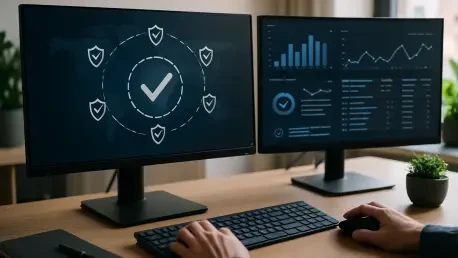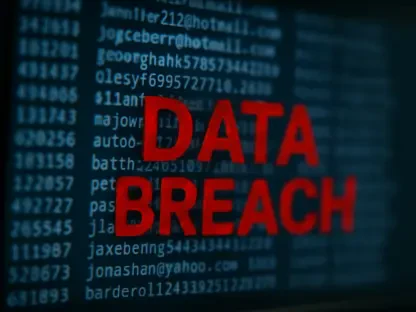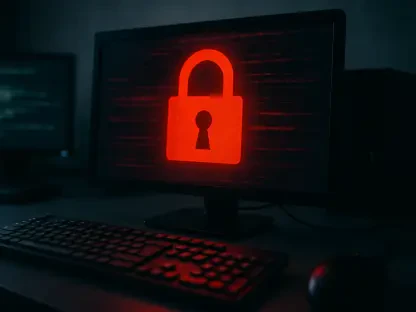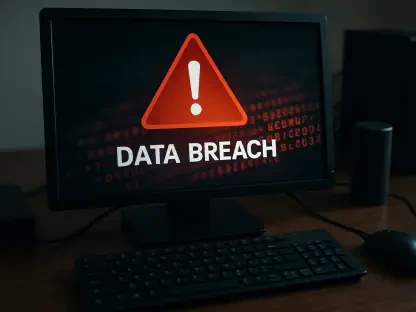In an era where cyber attackers can exploit a newly discovered software vulnerability within mere hours, the digital battlefield has never been more treacherous, with global corporations often unaware of critical flaws in their software until ransomware locks down their data. Picture a scenario where, within 24 hours of a flaw being exposed online, a company’s systems are compromised, costing millions in downtime and recovery—a daily reality for countless organizations lagging behind in securing their systems. The question looms large: how can businesses protect themselves when the window to act is shrinking by the minute?
The significance of this issue cannot be overstated. Cybercrime is a multi-billion-dollar industry, with breaches costing an average of $5.08 million per incident, according to recent IBM data. Delaying or ignoring software updates—known as patches—creates a gaping door for attackers to exploit. This story isn’t just about technology; it’s about survival in a landscape where the speed of defense must match the speed of attack. Continuous patch management emerges as a vital strategy, not merely an option, to safeguard against these relentless threats.
Why Cyber Threats Outpace Defenses
The stark reality of today’s cybersecurity landscape reveals a chilling imbalance: attackers often weaponize vulnerabilities within hours of their disclosure, while many organizations take weeks, or even months, to apply necessary fixes. This lag creates a dangerous exposure window, exploited by sophisticated criminals who operate with alarming precision. The disparity in reaction times highlights a fundamental flaw in traditional security approaches that fail to keep pace with modern threats.
How can any enterprise hope to survive when the gap between a threat’s emergence and an effective response is so vast? The answer lies in recognizing that cyber threats have evolved into a high-speed game of cat and mouse. Hackers leverage automated tools to scan for unpatched systems globally, striking before most IT teams even realize a vulnerability exists. This relentless pace demands a radical shift in how defenses are structured.
Patch management, the process of updating software to fix known flaws, stands as a critical frontline defense. Yet, under the pressure of increasingly complex and rapid attacks, conventional methods of periodic updates are crumbling. The challenge is clear: adapt to a model of constant vigilance or risk becoming the next headline in a data breach scandal.
The Urgent Need for Vulnerability Remediation
The tempo of cyber threats has accelerated dramatically, with exploit development shrinking from weeks to mere hours in many cases. Known Exploited Vulnerabilities (KEVs) are now weaponized almost instantly, leaving little room for error. This rapid turnaround means that any delay in addressing flaws can transform a minor issue into a catastrophic breach.
Financial and reputational stakes are higher than ever, with the average cost of a data breach pegged at $5.08 million by IBM’s latest findings. For IT professionals, business leaders, and small enterprises alike, this number underscores a brutal truth: failing to patch promptly isn’t just a technical oversight—it’s a preventable disaster. Every unpatched system represents a potential entry point for attackers, risking customer trust and operational stability.
Traditional monthly or quarterly patch cycles are relics of a slower era, obsolete against today’s dynamic threat environment. The urgency to remediate vulnerabilities in near real-time has become a defining factor in cybersecurity. Organizations must rethink their strategies to prioritize speed, ensuring that defenses evolve as quickly as the threats they aim to counter.
Core Elements of Continuous Patch Management
At the heart of modern cybersecurity lies the race between exploitation speed and response time. Statistics paint a grim picture: a 61% surge in exploited vulnerabilities over 30 days old has been recorded since 2025, revealing a critical exposure window that traditional patching fails to address. This delay often leaves systems defenseless during the most vulnerable period.
The economic imperative for timely remediation is undeniable. Consider a hypothetical scenario where a mid-sized retailer delays a patch for a known flaw, only to suffer a ransomware attack that halts operations for days, costing millions in lost revenue and recovery efforts. In contrast, the investment in proactive patching systems is a fraction of such losses, making a compelling case for urgency over complacency.
Automation serves as the bedrock of effective patch management, akin to how antivirus updates are seamlessly deployed without user intervention. By minimizing human error, automated tools ensure rapid and consistent application of fixes. Additionally, building redundancy through failover systems allows updates without downtime, framing resilience as a strategic asset. Yet, cultural resistance remains a hurdle, with many organizations clinging to outdated “don’t fix what isn’t broken” mentalities, stalling progress despite the clear risks.
Expert Insights on Patching Strategies
Voices from the industry underscore the pressing need for a new approach. Gene Moody, Field CTO at Action1, asserts, “Continuous remediation isn’t a luxury—it’s the baseline for cybersecurity in this era of instant exploitation.” This perspective aligns with research showing exploitation windows shrinking dramatically, alongside frameworks like NIST CSF and CIS Controls advocating for near real-time responses.
A real-world example brings this data to life: a financial services firm recently thwarted a potential breach by leveraging automated patching to address a critical vulnerability within hours of its disclosure. Their swift action prevented what could have been a devastating loss, illustrating the tangible impact of proactive measures. Such cases highlight the power of technology when paired with strategic foresight.
Beyond individual wins, there’s a broader societal benefit to consider. Cybercriminals operate like parasites, thriving on vulnerable hosts. When systems are patched swiftly, their pool of targets diminishes, disrupting their operations. This collective defense metaphor reinforces that every patched vulnerability contributes to a safer digital ecosystem for all.
Building a Robust Patch Management Framework
Transitioning to continuous patch management requires a structured, actionable approach. Start by assessing current patch cycles to pinpoint delays and manual bottlenecks that slow response times. Next, implement automation tools that deploy fixes in real time, using “policy-as-code” to enforce consistent actions across systems, ensuring no vulnerability slips through the cracks.
Designing for redundancy is equally critical—invest in failover mechanisms to maintain operations during updates, eliminating the excuse of potential downtime. Simultaneously, shift organizational mindsets by training teams to prioritize prevention and updating policies to reflect modern risks, challenging resistance with pointed questions about readiness. Finally, monitor and adapt by regularly evaluating patching effectiveness and aligning budgets with risk levels, preparing for a future of autonomous, self-maintaining systems.
Practicality remains key, especially for resource-constrained teams. Integrating these strategies with existing frameworks like NIST ensures accessibility without overwhelming complexity. The ultimate goal is to shrink the global attack surface, making cybercrime less profitable by ensuring consistent, timely action across all sectors. This vision of resilience transforms patch management into a powerful weapon against digital threats.
Reflecting on the Path Forward
Looking back, the journey through the evolving landscape of cybersecurity revealed a stark contrast between the rapid pace of cyber threats and the sluggish response of traditional defenses. Each insight underscored that outdated patch cycles had become liabilities, exposing organizations to preventable risks. The stories of near-misses and expert warnings echoed a unified message: adaptation was no longer optional.
Moving ahead, the actionable steps are clear. Organizations must commit to automation and redundancy as non-negotiable pillars of security, while fostering a culture that embraces constant vigilance. Budgets should reflect the reality of risk, prioritizing proactive measures over reactive firefighting. Leaders are encouraged to ask what more can be done, pushing boundaries to stay ahead of attackers.
As the digital realm continues to evolve, the vision of autonomous systems offers hope—a future where vulnerabilities are addressed before they’re exploited. This proactive stance, built on the foundation of continuous patch management, promises not just survival, but dominance over cyber threats. The challenge now lies in taking that first decisive step toward a more secure tomorrow.









